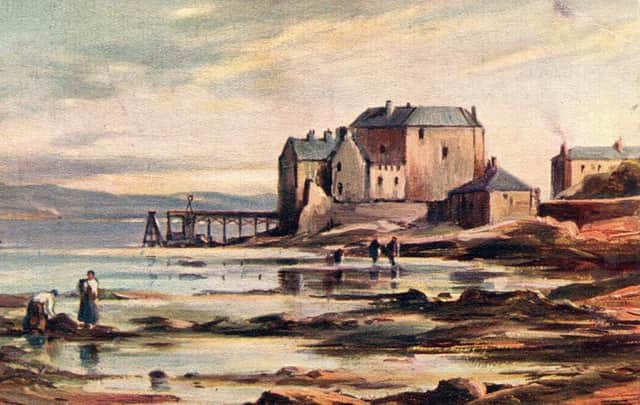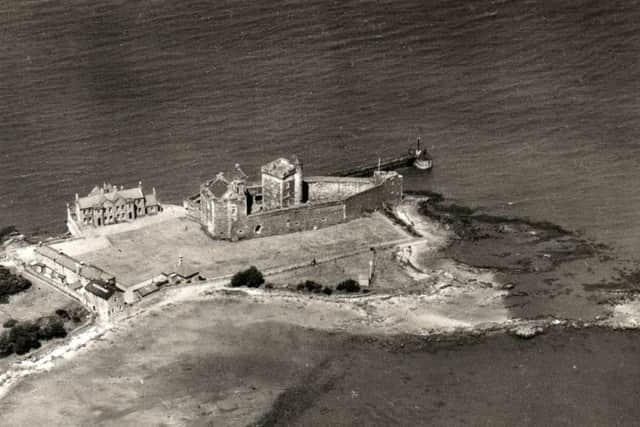Ian Scott: Blackness Castle '“ 'the ship that never sailed'


I think we often forget that this eastern outpost is indeed part of Falkirk district and I wonder how many local folk have not been there since the days when the village was a regular destination for Alexander’s mystery tours. The recent warnings that this seemingly impregnable fortress is in danger from erosion has brought Blackness back to mind and with it recollections of stirring times in the nation’s story.
The importance of this spot on the river owes everything to its natural harbour, the finest on this side of the Forth. Long before the fortress was erected the port was harbouring merchant ships and it was the need to protect this trade from attack that prompted the castle’s construction in the mid 15th century. The man responsible was the local Baron, Sir George Crichton, Earl of Caithness and Admiral of Scotland. More importantly he was Sheriff of Linlithgow and Blackness was the official port of the Royal Burgh which was one of the favourite resorts of the Stewart kings.
Advertisement
Hide AdAdvertisement
Hide AdMaybe it was Crichton’s naval connection, or the shape of the black basalt promontory, that led to the castle’s distinctive ship shape. Either way the result is a remarkable building with a curtain wall running all the way round like a ship’s hull and towers to ‘‘‘stem’’ and ‘‘stern’’ with a taller one as the ‘‘main mast’’ in the middle. The south and central towers are rectangular in plan but the north tower in the ‘‘‘bow’’ of the ship is triangular. Sir George had recently lost his own house in Edinburgh in a feud and probably thought he could settle down in his new ship-castle. However King James II had other ideas and decided that he would have it for himself. In 1453, four years after it was completed, Sir George handed it over but his son was none too pleased with the old man’s generosity and locked up his dad and held Blackness against the Royal army.


Despite bombardment, the fortress proved its worth and in the end the King had to negotiate before taking possession by agreement. It was the first of many attempts to blow down the formidable walls and it was reinforced several times during the turbulent reign of Mary Queen of Scots. In the 16th and 17th centuries it was used as a state prison with many political prisoners held there during the various religious wars. To quote the old music hall song, it was “one of the relics that Oliver Cromwell knocked about a bit” and was famously used to hold six Covenanting ministers in the late 1600s. Some reports say that local women held their babies up to the cell windows so that they could be baptised by one of the ‘‘Blackness Six’’! In the 19th century it was used as an army barracks and there are several fine surviving buildings which housed the officers and men. It was later turned into Scotland’s main ammunition depot and there were many structural changes including the construction of a long cast iron pier where explosive stores were loaded or landed at a safe distance. In more recent times Blackness has caught the eye of film producers and The Bruce, Macbeth, Hamlet and more recently Outlander have been filmed within the grim walls. This has brought many visitors but the true story is just as exciting and makes a visit to the “ship that never sailed” a very rewarding day out.